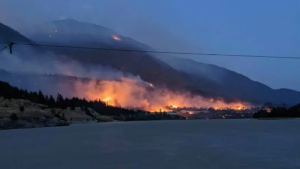Bats Are Getting Better

Source: Schulich Medicine and Dentistry
Bats are an incredible and complex species.
They are adept at adapting. They can eat like 1000 bugs an hour. They are winged mammals capable of night flight, radar navigation, and occasional luminescence. Bats, as beings of the nighttime, have wondered deeply into the human psyche, supposed harbingers of both doom-and-gloom and better-times-ahead. A seminal modern popular cultural reference point – the vampire bat – remains as powerfully evocative of our inner fears of the winged night creatures today as when Bram Stoker was writing Dracula. In today’s era of superheroes, a GIANT in that world is the Batman, possessing the same nocturnal habits as the animal, with Bruce Wayne doing his own impersonation of a bat cleaning the night sky of mosquitos by corralling the Riddler, the Joker, and the like. And let’s not forget the planet’s recent experience with the coronavirus pandemic, when a bat-to-human interaction helped spark the global catastrophe.
So while bats are incredible and complex that calls out for our admiration and attention, it is true, there are also a lot of reasons both rational and irrational for humans to fear bats and treat them accordingly as pests and vermin, threats to our lives (although we’d be hard-pressed to say how). For this writer, I have a unique experience of having a bat fly into my hair during summer in High Park in Toronto. I have also had the experience of escorting bats out of my apartment. In those cases – and for whatever reason – I didn’t experience fear but rather curiosity.
Thus I was curious when I came across new research – early stage, to be truthful – that indicates some of the colonies of bats in Nova Scotia hardest-hit by the uber-deadly ‘white-nose syndrome’ (a fungal growth that interrupts the hibernation patterns of bats, resulting in the awakening too early to secure food, and thus starving to death) were marking a strong and noted comeback. According to a report on the CBC:
White-nose syndrome killed more than 90 percent of Nova Scotia’s bats between 2011 and 2013. It has killed millions across North America.
But a local conservation group based in southwest Nova Scotia has found larger bat colonies in their most recent ‘census’ that holds positive portends for the future. From the CBC report:
Lori Phinney, a wildlife biologist with the Mersey Tobeatic Research Institute, said researchers were pleasantly surprised to find the province’s largest known colony has grown to about 600 bats.
Phinney followed up with a call for citizen-conservationists to do their part by joining the effort to capture sightings of new colonies and/or colony change/growth.
“With the help of the public reporting bat sightings, we can hopefully figure this out over the next few years,” she said. “What we really want is where you saw the bat, the date and the time, and maybe what the bat was doing.”
And she pointed us to a link to get started: http://www.batconservation.ca/
Not sure about you, but this nocturnal creature WILL be paying more attention to the night skies as I search for and admire the bats in my neighborhood!
Hey, Landlords, Time to Go Green!

Source: Greener Ideal
As the upcoming seasonal rental period approaches, many people will be on the hunt for a new place to live and you can attract potential buyers by selling an eco-friendly location! A source reports that keeping up with the current trend of being environmentally conscious can actually increase your chances of finding a renter for on-sale locations.
The first way to increase sustainability in your house is to install energy-efficient appliances—any appliances which reduce the overall electricity cost peruse. This not only allows for tax breaks for the landlord of the establishment but also reduces the overall charge for rent. Additionally, the same premise can be used to install low-flow and water reduction faucets, to reduce the overall amount of water use in the location. This will save on the water bill and will also save depleting water reserves!
The last way to be environmentally conscious is to introduce a variety of eco-friendly décor in the house. It may sound odd, but it is a rather simple process! For example, if you introduce native plants as décor, this can be used for meals and compost. Moreover, garden plants such as native grasses and trees will not only make the location more appealing to renters but will also appeal to pollinators and other wildlife near you!
Nova Scotia Is Not Protecting Over 60 Species at Risk

Source: CBC
A new report published by Nova Scotia’s auditor general has found that the province has not been able to protect species at risk for almost half a decade. This unfortunate result was found after a year from the Supreme Court’s ruling to implement recommendations provided by the province in 2016. The five regulations provided to the Department of Natural Resources in Nova Scotia:
- The Department of Natural Resources should establish recovery measures such as the creation of teams and other management tools to protect species at risk
- The Department of Natural Resources should establish a method of communication with said teams to ensure that they address concerns with sensitive species immediately
- The Department of Natural Resources should review the species at risk list to establish proper practices of protection for all identified species
- The Department of Natural Resources should create a monitoring program for all species at risk
- The Department of Natural Resources should create a biodiversity strategy and a detailed action plan to outline goals for species conservation
However, it seems that nearly 60 species on the list have been more or less ignored by the province even after the establishment of these recommendations. The province has not even reviewed the list and the Department of Lands and Forestry has yet to create recovery teams or action plans to protect species.
Rural, Remote….and Under Greater Threat

Source: CBC
Last week we touched upon the highlights and lowlights from the federal government’s recent Canada in a Changing Climate: National Issues report. Now thinkers are delving into the areas of greatest concern, hoping to be able to foment the solutions to mitigate the worst impacts. As the researchers reviewed the full national impact of climate change on Canada, its people, and its national vibrancy, there has been an increased focus on examining the areas of this big, giant land where the impacts are likely to be the most severe (and from a complex ecosystem of interconnected problems).
“I’m extremely worried about the impacts that climate change is having and will have,” said Kelly Vodden, one of the authors of the new National Issues Report and a professor at Memorial University.
As researchers looked at the particular impacts on rural and remote communities in this country – which let’s face it, makes a massive majority of our landmass – it demonstrates that for Indigenous and small-town Canada the existing erosion of traditions, jobs/economic opportunities, rising costs and the rush to the big cities (including government funding), the vaunted ‘resiliency’ of the rural and remote communities will be severely tested by the obvious and less-obvious impacts of climate change. From the broadcast-news-worth wildfires and flash floods to the subtle and yet more lethal threats to our food systems and waterways that comes from permafrost thaw, invasive species, seawater inundations coupled with freshwater droughts (or complete water scarcity), these impacts will be felt more harshly in the rural and remote communities as the respective Canadian governments seek to fight off the impacts in the places where most of us live…..urbanized Canada.
Ironically, our collective national experience with the Covid-19 pandemic has demonstrated the tendency for urbanized Canadians to seek out solace and refuge in the wilder places in our land. There’s a rush to buy property in rural and remote areas, as city folks dream of their own ‘Green Acres’ in the corners of the country that they might not have previously thought about. And the infrastructure that is so at risk from climate change – our waterways, our powerlines, our sewage systems, etc. – that we worry about in the urbanized areas are equally at risk in the R.O.C. (rest of Canada) but are generally less sparsely developed and less frequently maintained to the degree that is becoming necessary as we grapple with rising waves of climate consequences.
Hopefully, as we continue to craft new solutions to our national, shared problems, we develop equitable and nationally shared solutions that serve rural and remote communities while building bridges with their fellow citizens living in the urbanized communities.

David McConnachie is A\J’s publisher.












